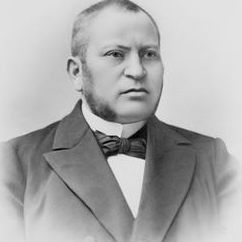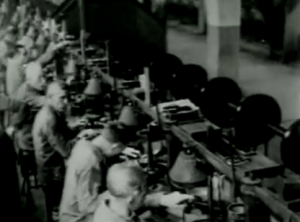 Recently the Royal Asscher Company donated a sapphire ring to raise money for AIDS. The auction was run by the Human Rights Campaign and received a great deal of trade coverage.
Recently the Royal Asscher Company donated a sapphire ring to raise money for AIDS. The auction was run by the Human Rights Campaign and received a great deal of trade coverage.
Why?
The story of Royal Asscher Company is one of accomplishment, persecution, tragedy and human perseverance.
The company was founded in 1854 by Joseph Isaac Asscher who named the company I.J. Asscher Diamond company, for his son, Isaac Joseph Asscher.
I can’t find much about Joseph Isaac Asscher. The Royal Asscher website merely notes he was already a “famed artisan” in the diamond industry.
Given the way diamond cutters had organized themselves by mid-19th century Amsterdam, this may be something of an understatement.
 By 1815, diamond cutting in Holland had evolved into the scientific cutting of the stone along geometrical lines. That is,artisans in the diamond industry has stopped just polishing and bruting (rough cutting) stones, they were turning them into something we recognize today as cuts.
By 1815, diamond cutting in Holland had evolved into the scientific cutting of the stone along geometrical lines. That is,artisans in the diamond industry has stopped just polishing and bruting (rough cutting) stones, they were turning them into something we recognize today as cuts.
Recognizing the increased expertise necessary to handling precious stones, the leading diamond cutters of Holland established a trade system similar in some respects to the medieval guilds. That is, they declared themselves “masters” and set out to employ apprentices who would specialize in various aspects of the diamond cutting and polishing process. I suspect the Joseph Isaac Asscher was a “master” diamond cutter.
Isaac Joseph in turn followed his father into the diamond industry and in turn was followed by his sons, Joseph and Abraham.
In 1902, Joseph Asscher designed the original “Asscher Cut.” The Asscher cut is a stepped square cut and is often called the “square emerald cut.” It has a three-step crown and a seven step pavilion and a somewhat small table . (Joseph Assher eventually reduced the steps in the crown to two or three cuts and the pavilion to three or four steps, increasing the overall brilliance of the diamond.) It was the first cut to be patented and the Asshers held the patent until World War II.
 The Asscher family was a key player at the start of the modern diamond industry. In 1893 the Excelsior was found in South Africa and at that time was the largest known diamond in the world, weighing almost 972 carats. Abraham, Joseph’s brother, cleaved the Excelsior which was ultimately carved into ten diamonds.
The Asscher family was a key player at the start of the modern diamond industry. In 1893 the Excelsior was found in South Africa and at that time was the largest known diamond in the world, weighing almost 972 carats. Abraham, Joseph’s brother, cleaved the Excelsior which was ultimately carved into ten diamonds.
The Asschers were also charged with cleaving the 3,106 carat Cullinan Diamond. This time it was Joseph who cleaved the diamond after months of study.
The company prospered in those years. The Asscher cut was particularly popular in the 1920s when Art Deco was ascendant and the company retained their exclusive patent for the cut.
However, this changed in the next decades. On Mary 10, 1940 the Nazis invaded Holland and the nation fell six days later.
The Asscher Company’s stocks and patents were seized by the Nazis and the family and most of its employees deported to concentration camps. Of the 500 polishers who were sent to concentration camps, only fifteen survived and only ten Asscher family members survived.
Although there were some survivors, there was no company to return to when the war ended. The patent had been allowed to expire during the war and many diamond companies began copying it. Their stock had been stolen and the Amsterdam diamond industry wiped out.
In 1946, the family received an invitation to relocate in the United States. They declined, deciding instead to rebuild in Amsterdam.
In 1980 it was honored with a royal title from Queen Juliana of the Netherlands saluting the century-old role of the family in the diamond industry, thus, the Asscher Diamond Company became the Royal Asscher Diamond Company.
Nearly 100 years after the original Asscher cut was patented, the company introduced the Royal Assher Cut which improved upon the first. It is protected by an international patent and cannot be imitated.
Today, the company has a presence in the United States, England, South Korea and other major capitals.
Skill, knowledge, courage and perseverance. It’s a profound legacy.

